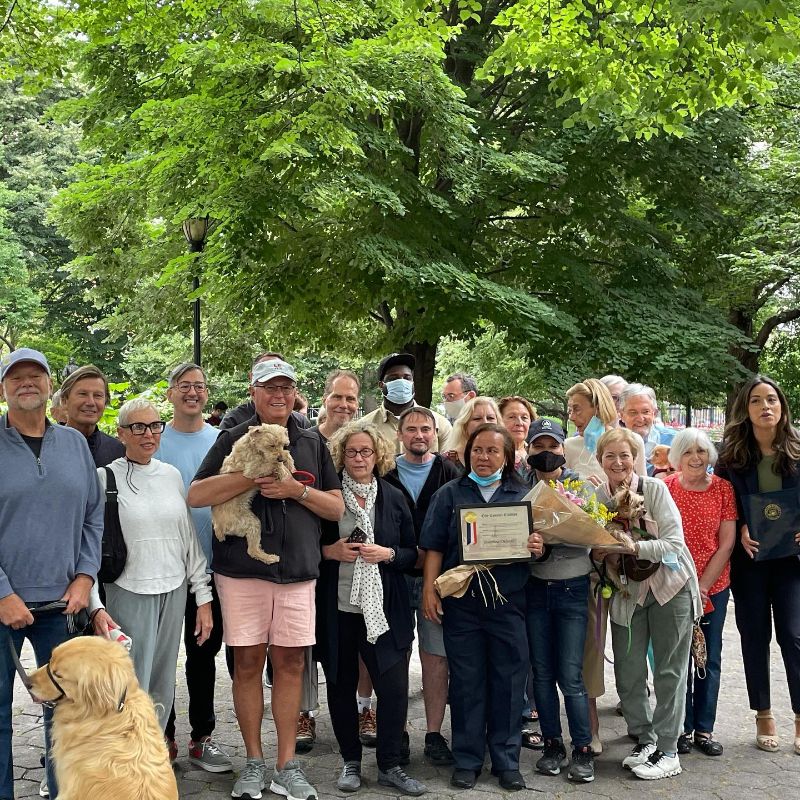SPNA Annual Gala
SPNA’s Annual Gala will be in the evening of Friday, October 21 from 6:30-9:30pm at St. George’s Episcopal Chapel. More information will be shared in the coming months.
SPNA’s Annual Gala will be in the evening of Friday, October 21 from 6:30-9:30pm at St. George’s Episcopal Chapel. More information will be shared in the coming months.
In order to be more effective in addressing issues in the park and the surrounding community, there are times when one on one communication is not enough and many voices need to be heard. For example, when the Park Department closed the dog run at 6 p.m. without any consultation from the community, we all came together to email and call the Parks Department, Parks Commissioner, Carlina Rivera, and others. The galvanized force successfully got the policy rolled back.
We encourage you to join the approximately 100 people who have signed up for our pressure campaigns to advocate for decisions that better our community. Please sign up and join us in making sure the decision makers and those in power realize the Stuyvesant Square neighborhood is an engaged community and needs to be listened to.
On Sunday, November 21 at 3PM, St. George’s Choral Society will hold an in-person concert at St. George’s Church on 7 Rutherford Place with pieces by J.S. Bach and Haydn. They will also offer a live streaming option.
Discount tickets are once again exclusively available for members of the Stuyvesant Park Neighborhood Association.
On Friday, June 11th, Councilwoman Carlina Rivera presented Stuyvesant Square Park Crew Chief, Josephine DeJesus with a citation from the City Council for her dedication to our park.

At right is park user Moses Browning, who reported the incident.
Josie’s commitment to the park is on display and undeniable every day, but on June 2nd, her dedication reached a new level when she confronted an arsonist that was setting fires in the east and west sides of the park.
Park user Moses Browning witnessed this terrible incident and contacted Councilwoman Rivera’s office to inform them of Josie’s actions. They immediately wanted to recognize Josie for her extraordinary value to the community.
This ceremony was attended by many members of the community, who were so happy to see Josie’s hard work and dedication recognized in this fashion.
In addition to receiving an award from the City Council, Councilwoman Rivera presented Josie with an award from the United States Senate. That morning, the Councilwoman had breakfasted with Senator Chuck Schumer to discuss funding for our district at our very own Joe Jrs. Senator Schumer passed on the award to Councilwoman Rivera at the meeting.
This is a well deserved honor for Josie, the heart and soul of Stuyvesant Square Park.
Click here to view a snippet of the event.

Hydrangea flowers belong to the genus Hydrangea, which consists of about 70 species native to Asia and the Americas. Its name is derived from the Greek for “water vessel” because of the shape of its seed capsules and the overall shape of the plant, which is reminiscent of a water pitcher. Like its name implies, hydrangeas require plenty of water and benefit from consistent moisture. They grow from early spring to late fall in partial sunlight, adding elegant beauty to public and private spaces.
Hydrangeas develop in flowerheads, which typically contain two types of flowers: small non-showy flowers in the center or interior of the flowerhead, and large, showy flowers with colorful sepals that often extend in a ring. The flowers vary in color and come in white, blues, pinks, and purples. The color is heavily affected by the pH of the soil and the presence of aluminum ions, where more acidic soil results in bluer blooms and more basic soil results in pinker blooms. As a result, the flowers on the plant can change color with each bloom.
The history of hydrangeas is filled with many meanings and uses. The earliest of its fossils were found in the western United States and Alaska and date to nearly 60 million years ago. However, most hydrangeas are believed to have originated in Japan, where they hold considerable cultural significance. They are mentioned in eighth-century poems, are hallmarks of the rainy season and onset of summer, appear as motifs on textiles and common items, and are celebrated in festivals. They symbolize heartfelt emotion, understanding, and apology, and the changing of colors is thought to represent the impermanence of the human condition.
In contrast, hydrangeas held negative connotations in Europe, where they first arrived from North America and then from Japan and China in the 18th-century. They were associated with arrogance and boastfulness because the plant produced many flowers but few seeds. English men in the 19th-century would even send hydrangeas to women who rejected them, accusing them of frigidity. They believed this plant was especially unlucky for young ladies because it kept them from finding a suitable husband. If a household allowed hydrangeas to grow on their property, it was thought to be a curse that would result in the daughters of the house living their lives as lonely spinsters.
Ironically, today hydrangeas are some of the most popular wedding flowers, and are used to celebrate the joining of individuals and families. Their vibrant blooms add splashes of color in our park and the abundant rain allows them to remain healthy. Their changing of colors from blue to pink and back calls to mind the fairies from Disney’s Sleeping Beauty arguing over the color of Aurora’s dress. Blue or pink? Sometimes it’s hard to make up our minds. So why not have both?